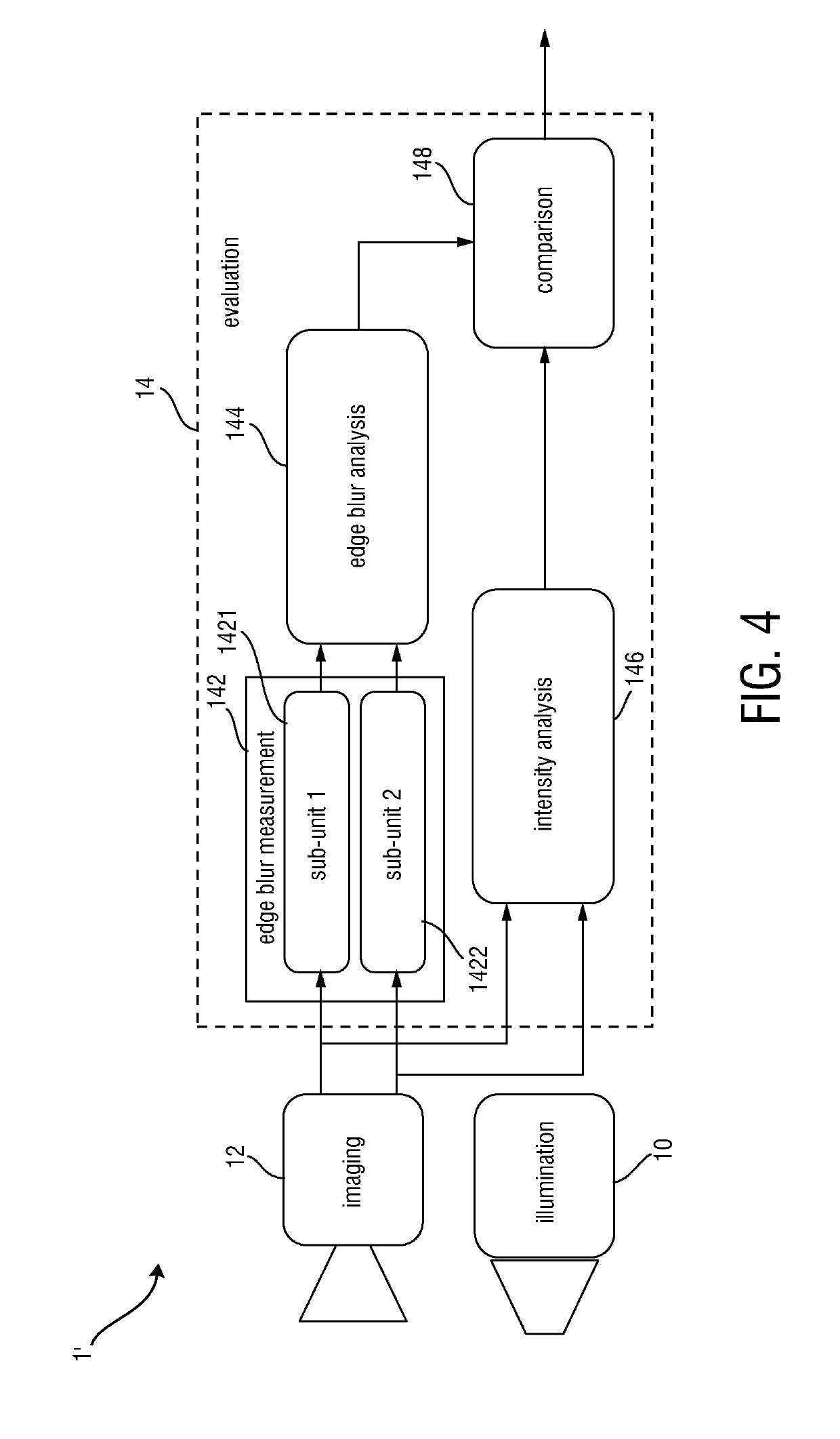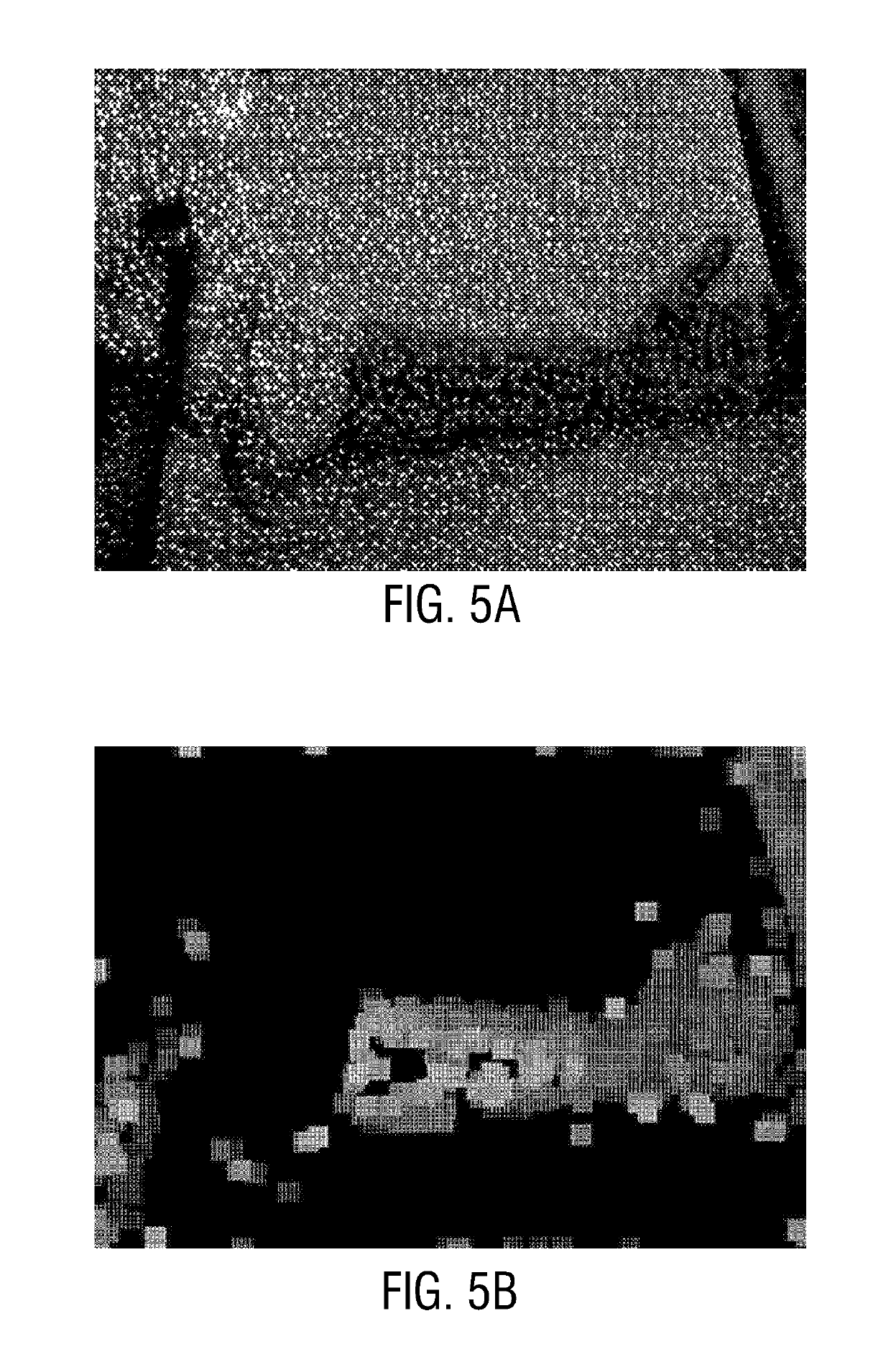Device and method for skin detection
a technology of skin detection and device, applied in the field of devices and corresponding methods for skin detection, can solve the problems of not being able to detect skin areas under low illumination conditions or in darkness, and being considered unobtrusive and well suited to medical use, and achieve the effect of reliable, accurate and fast skin detection
- Summary
- Abstract
- Description
- Claims
- Application Information
AI Technical Summary
Benefits of technology
Problems solved by technology
Method used
Image
Examples
first embodiment
[0045]FIG. 1 shows a schematic diagram of a device 1 for skin detection according to the present invention. The device 1 comprises an illumination unit 10 for projecting a predetermined illumination pattern onto a scene. The scene includes, in this example, a patient 2 lying in a bed 3, e.g. in a hospital room or other healthcare facility, but may also be the environment of a neonate or premature infant, e.g. lying in an incubator / warmer, or a person at home or in a different environment. The illumination unit 10 may be a special lamp or projector which is configured to generate and emit a predetermined structured light pattern, e.g. a grid or array of lines, crosses, dots or other predefined elements, which preferably have sharp edges.
[0046]Further, the device 1 comprises an imaging unit 12 for acquiring an image of the scene. The imaging unit 12 is particularly a camera (also referred to as detection unit or as camera-based or remote PPG sensor), which is configured to obtain imag...
second embodiment
[0054]FIG. 4 shows a schematic diagram of a device 1′ according to the present invention. An exemplary dot pattern that may be used as illumination pattern is depicted in FIG. 4A as projected on the person's hand. The IR dot pattern shown in FIG. 5A projected is of an exemplary wavelength of 830 nm (near IR) where human skin has a significant absorption coefficient. It can be noticed from FIG. 5A that the intensity of the dots present on human skin is less than that of speckles present on other objects, which have lower absorption coefficients (e.g. clothes). This fact is used to segment the human skin by thresholding the intensity values. To compensate a possible impact of ambient light at the same wavelength, the intensity of the dots versus the intensity of adjacent pixels (not illuminated by structured light) is analyzed.
[0055]To further improve the robustness (and specificity) of skin detection using this approach, an illumination pattern projected at at least two IR wavelength...
PUM
 Login to View More
Login to View More Abstract
Description
Claims
Application Information
 Login to View More
Login to View More - R&D
- Intellectual Property
- Life Sciences
- Materials
- Tech Scout
- Unparalleled Data Quality
- Higher Quality Content
- 60% Fewer Hallucinations
Browse by: Latest US Patents, China's latest patents, Technical Efficacy Thesaurus, Application Domain, Technology Topic, Popular Technical Reports.
© 2025 PatSnap. All rights reserved.Legal|Privacy policy|Modern Slavery Act Transparency Statement|Sitemap|About US| Contact US: help@patsnap.com



